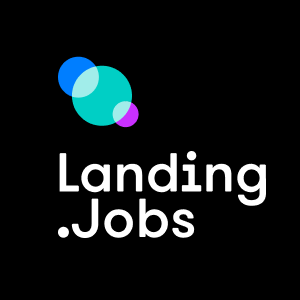Talent acquisition strategies in tech recruitment
When it comes to IT recruitment, deciding between subscription plans and pay-per-hire models can significantly impact how efficiently you will hire top talent. In this context, exploring real-world examples and practical advice is essential to help you make an informed decision.
The Netflix approach to leveraging subscription plans
Netflix and other forward-thinking companies have completely revolutionized the traditional subscription model by incorporating it into their recruitment strategy. By investing in external platforms like LinkedIn Recruiter, they have gained uninterrupted access to a vast pool of highly skilled technology professionals.
However, oversaturated applications on job listing platforms like LinkedIn have made recruitment costly and inefficient both for companies and tech professionals. Therefore, specialized platforms like Landing.Jobs have emerged with a targeted approach that saves time and resources while ensuring higher-quality matches between employers and candidates.
Pros and cons of using subscription plans:
Advantages:
- Cheaper cost: Large quantities of hires can be made at a significantly cheaper cost per hire.
- Continuous candidate applications: Subscription plans ensure that companies with ongoing hiring requirements have continuous access to a continuous flow of potential candidates.
- Better budget forecasting: Fixed costs associated with subscription plans facilitate better budget forecasting, which is particularly beneficial for companies with numerous open job positions.
- ATS integrated as an add-on: Besides the extra built-in tools that you could take advantage of, the most important aspect is their easy integration with the company’s current HR systems, avoiding any potential hassle.
- Time and resource savings: Pre-vetted candidate services will help your company save time in searching for ideal candidates and resources.
Disadvantages:
- Growth speed also depends on the client: The cost per hire may unnecessarily escalate if there are minimal hiring requirements that could raise some barriers to the hires. In other words, success assurance relies on the employer’s agility too.
- Perceived value is not guaranteed: Some individuals may not feel they receive fair value from the service or product to justify the subscription cost (unless you choose services with reporting or support services included, which usually helps to clarify the perceived value).
The success story of how Outsystems does pay-per-hire
In order to continuously improve their hiring strategies, industry leaders like Outsystems have adopted a pay-per-hire model with specialised recruitment companies like Landing.Jobs. By prioritising quality over quantity, they could ensure they find the best candidates for the job and only pay a fee upon successful placement. This approach has proven highly effective and is an excellent example of how companies can optimise their hiring processes.
Pros and cons of using pay-per-hire plans:
Advantages:
- Performance-based Payment: Pay-per-hire models incentivise recruitment partners to focus on finding high-quality candidates, reducing the risk of making a wrong hiring decision. In other words, you only pay for the success.
- Tailored flexibility: These models provide the advantage of scalability, making them perfect for adapting hiring strategies to meet business requirements. They are normally only used for limited hiring needs, one-off and low-quantity.
- Adaptation to volatility: This model allows for rapid adaptation to the changing volatility of the company, especially in terms of team size in cases of higher turnover.
Disadvantages:
- Higher costs: Since each successful hire will be charged individually instead of a monthly fee with unlimited hiring.
- Higher logistics effort: Your internal HR team is fully responsible for ensuring the success of the recruitment process. Unless you add RPO services to your plan, you will have an external tech recruiter fully integrated into your HR team.
- Without dedicated account managers: This way, you will not have access to continuous specialist support that can provide industry insights, trends, and changes that you would not have access to in other ways.
Designing your unique tech hiring strategy
As we’ve discussed, there is no direct and closed answer about subscription plans and pay-per-hire models in the tech recruitment industry. In general, subscriptions are a safer and more profitable option, but they should be adapted to your reality, depending on your company’s specific needs, budget, and hiring goals.
Final expert advice:
- Be specific: Opt for platforms with specific targets for your business and different levels of experience, from hiring junior developers to securing experienced professionals, whether for permanent roles or temporary assignments.
- Foster DEI: Look for services that support you in creating inclusive corporate policies (DEI programs, for example), as this is one of the factors most valued by professionals worldwide.
- Go global: Hiring locally is always more expensive, so consider global or remote options. If your company isn’t ready yet, look for hiring partners who have local and international talent pools (even if you operate locally), accommodating remote work or relocation services so that they can support you when you want to make the change.
- Centralise your management: Look for hiring partners that offer a wide range of services and centralise your suppliers. This way, you avoid increasing your company’s logistics and internal management by only having to deal with one partner who supports you in all aspects.
To navigate these complex decisions and move to action, focus on implementing your business plan rather than recruitment processes, consider partnering with hiring specialists and together choose subscription or pay-per-hire models as the ideal hiring strategy that best aligns with your goals. Get in touch with us for IT talent.
Focus on what really matters:
The best talent for your business.






0 Comments